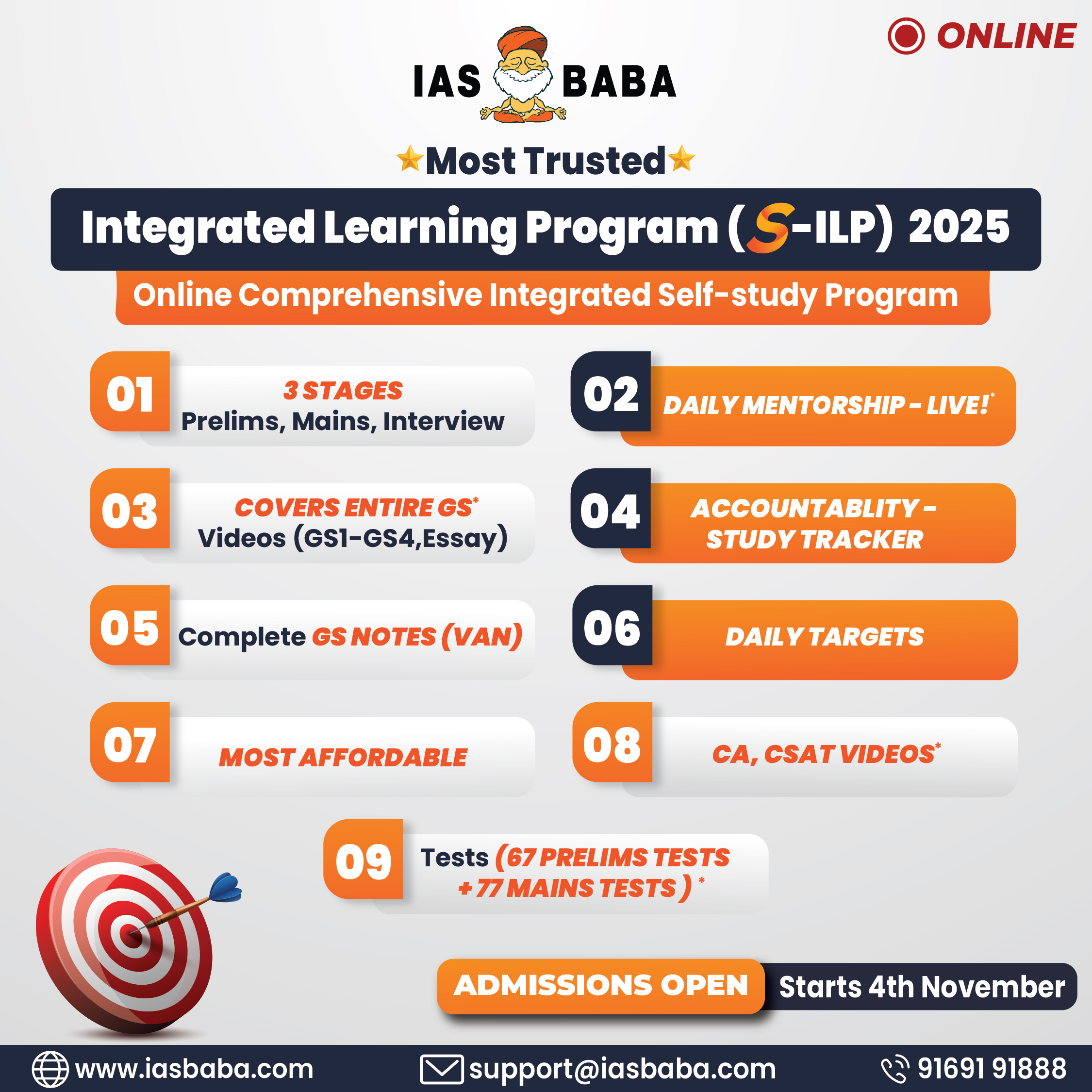Think and Learn, TLP Mains 2015, UPSC, UPSC Mains- Think and Learn-2015
TLP: GS Mains Synopsis [Day 64]
Q.1) “The North Eastern States of India have always been in a state of turmoil and are always high on India’s internal & external security Radar. However, recent move of Union Government to totally de-link police modernisation scheme from Central assistance after the recommendations of 14th Finance Commission does not augur well with the reality of North Eastern State”. Do you agree? What is your stand on this issue?
The Top Answer for this Question is written by – Shiuli
Ans) The move for delinking of police modernization by GoI is an attempt to allow States carry out reform measures on their own with increased tax devolution. However, this move may be regressive on the following grounds:
- Unlike other parts of the country, the NE lies at the junction of Bhutan, Bangladesh, China and Myanmar.
- The NE States have been besieged by conflicts on language/ethnicity, migration etc. The risk of social conflagrations remain high
- Various accords which are important for the integrity of NE such as Assam Accord, Bodo Accord, Mizo Accord etc will be difficult to enforce
- Connectivity to the NE is very low. In such a scenario, the protection of connectivity services such as the railways and helicopter services such as Pawan Hans assumes important
- Implementation of the 5th and 6th Schedule provisions
The solution to the problems of underdevelopment of NE lie in greater connectivity, investment, skill-development of the youth, reconciliation between the various conflicting factions etc. However, achieving these goals requires security to the general public. In such a scenario cutting the funding for police modernization does not augur well for the security scenario of NE.
Q.2) The recently concluded Naga accord is not as important as an isolated event as it is as a model for other insurgent groups in the north-east. What do you think? Does in your opinion the accord will have positive spillovers in the region? Examine.
The Top Answer for this Question is written by – Adityaka
Ans) The Naga Peace Accord between the government of India and the NSCN-IM is a significant step towards establishing regional stability and integrating the North Eastern region with the Indian mainstream.
The Naga Accord is important as an isolated event as it signifies the willingness of the rebel groups to conduct peaceful dialogue within the ambit of the Indian Consitution. However, the track record after the Shillong Accord has rendered such a move suspect as the NSCN had continued insurgency after an agreement to lay down arms.
A significant aspect of the accord is the NSCN-IM giving up its demand for sovereignty and a state of Nagalim in exchange for greater autonomy for the Naga inhabited areas. This should be seen in the light of the refusal of Arunachal Pradesh, Manipur to cede any of their territory to any such created state. This model can be replicated while negotiating with other insurgent groups such as the NSCN-K, which just conducted its first offensive against the regional security forces killing 12 jawans.
The accord will have positive spillovers, especially in terms of greater connectivity, economic integration and bringing the Naga people into the political mainstream. Furthermore, it will boost regional connectivity between the North East, Bangladesh, Myanmar, Bhutan and Nepal giving an impetus to local supply chains. However, its effectiveness lies in its enforcement. Modernising police, maintaining credible deterence against insurgents, undertaking skill development and promoting cultural tourism is the way forward.
Q.3) The Indo-Pak joint Ufa declaration and the stance of Pakistan at the UN are in complete contrast with each other in terms of content as well as intent. Do you think that the Pakistani state is deeply influenced by the non state actors in it’s attitude and approach towards India? If so, is that a threat to India’s internal security? Critically examine.
The Top Answer for this Question is written by – Mumtaz Ahmad
Ans) Whether it was the Standstill Agreement, Tashkent Agreement, Shimla Agreement or the recent Indo-Pak Ufa joint declaration signed on the sidelines of SCO summit, Pakistan has always vacillated on its stance.
Following points elaborate the context of Indo-Pak relations and influence of non-state actors:
- Pakistan neither been a successful democracy nor it has been able to control the excessive military influence.
- Backdoor support for militant organisation such as LeT and using it for frequent border infiltration has further soured any peaceful method of settlement.
- Pakistan has constantly refused in letter and spirit, any attempt to resolve issues bilaterally.
- Frequent ceasefire violations along the LOC has further elaborated the stance of Pakistan for peace talks.
The ongoing conflicts across the border, increasing infiltration attempts as well as the Pakistan’s notorious stand to raise the Kashmir issue in UN has to be checked strategically and diplomatically. Following threats could arose vis-a-vis internal security:
- Militant infiltration and ceasefire violations.
- Drug trafficking.
- Instigating separatist elements in Kashmir Valley.
- Increasing Sino-Pak relations could enrage border conflicts and assaults.
India must continue its peaceful stance but it has to develop pressure on Pakistani regime with some leverages that it controls such as manipulating Indus Water Treaty, opposing flow of Satluj, Ravi, Beas etc into Pakistani territory.
High Order Thinking
Q.1) Balancing it’s strategic relations simultaneously with the gulf countries (i.e. UAE, Saudi Arabia etc), Iran and Israel is a diplomatic tight rope for India? Do you agree? As far as India is concerned, how equations might changed after the P5+1 deal concluded with Iran recently.
The Top Answer for this Question is written by – Praneeth
Ans) Balancing relations with GCC, Iran and Israel is indeed a diplomatic tightrope for India:
— The Sunni dominated Gulf countries and Shia dominated Iran have had fractious relations for a long time. Iran and Israel also have had fractious relations.
Moreover, India has had historical and cultural linkages with both GCC and Iran. It also has deep strategic interests involved:
— The Middle East – Gulf and Iran are the major oil suppliers of India. These countries are crucial for are energy security. A huge diaspora resides in these for their livelihood. Their remittances make India the largest receipent and also a crucial source of forex.
— Chabahar port in Iran is crucial for India’s connectivity to Afghanistan and Central Asia.
— Israel has emerged as a strategic partner with deep cooperation in defence and agriculture. Israel is today our 2nd largest supplier of defence equipment. Cooperation on counter-terrorism is also picking up.
Equations after P5+1 Deal:
— India can now go ahead and deepen relation with Iran – Oil, Chabar port construction which serves as a gateway to Afghanistan and Central Asia.
— However, Israel and GCC are wary of a resurgent Iran. They still fear a Iran’s nuclear capabilities. Saudi Arabia can get closer to Pakistan to attain nuclear capabilities. GCC/Israel-India ties can get constrained in this context.
Thus, the P5+1 deal both provides an opportunity to get closer to Iran, but at same time need we need to be cautious. India needs to display great diplomatic finesse in order to balance its relations and safeguard our strategic and national interests.
Q.2) The debate of bringing political parties under the purview of the RTI Act is closely interlinked to the issues of black money and internal democracy in the political parties. How far RTI can resolve these issues if at all there evolves a positive consensus in the political class regarding applicability of the RTI Act? Critically examine.
The Top Answer for this Question is written by – Jimboomba
Ans) The issue of black money and internal democracy are central to the matter of bringing political parties under the purview of RPI act.
It is a well known fact that a substantial amount of electoral funding of all major political parties are done using black money. 75 percentage of the source of funding is unknown. Since this pattern is cutting across all major political parties ,they are united in their stand against bringing political parties under the purview of RTI.
This makes the prospects of a political consensus emerging over the issue bleak. But if realized it,
- Can play a crucial role in curtailing the pervasiveness of black money in electoral fundings
- Bring more accountability and transparency for political parties
- Enhance public’s confidence in political parties
But given the highly competitive nature of Indian elections, there are chances of the RTI provisions being tweaked by rival parties to gain unfair political milieage in elections.
- It can impinge on strategic political decisions of parties requiring some degree of secrecy.
- Making internal minutes of party discussions public wont augur well for their smooth working.
- Also given the lack of emphasis parties give to documentation, the requirement of setting up a separated dedicated office of an information commissioner may be an uphill task for most parties.
Unfurling the RTI umbrella over political parties is undoubtedly a boost to Indian democracy. But its implementation needs to be in consonance with the unique dynamics of Indian politics and elections.
Q.3) What inferences can be drawn from the data on religion census released in 2015? Why in your opinion there is a difference in the rate of decline of population increase and the sex ratio among various communities? Do these differentials also tell about the socio-economic conditions of these communities? Elaborate.
The Top Answer for this Question is written by – Rahul Agrawal
Ans) Recently Union government has released the SECC 2011 data according to religious groupings. Some of the observations are:
- The decadal growth rate of Muslim community is about 24% while, that of Hindu community is about 16%. Christian and Sikh communities are having single figure growth figures.
- The population of Hindus have dipped below 80% in the census data
- There is declining trend of population growth in every community but, the decline is less in Muslim community in particular.
- Gender ratio is better among the Christian and Muslim population, while it has deteriorated for Hindu & Sikh community.
The inference which could be made is:
- The importance of population control has been understood by society as a whole and thus, there is all across fall in decadal growth rates.
- Preference for male child is also present among all religions, though Muslim and Christians are less prone to sex selective abortions.
Some of the reasons for these trends are:
- Muslim community is generally socio-economically backward in the present Indian society. Thus they lack awareness about the benefits and methods of family planning
- Some Muslim segments are orthodox in their opinion about religious laws, women are not allowed to work, less say in family decisions lead to lesser decline in population growth
- Hindu and Sikh communities, in desire to keep their family small; indulge in sex selective abortions while other communities shows lesser discrimination. Also, the prosperous sections of society are able to utilize more advanced techniques of abortion.
Thus, the data reveals about the relative socio-economic status and their impact on demographical composition in the Indian society and may prove useful for suitable policy interference.













